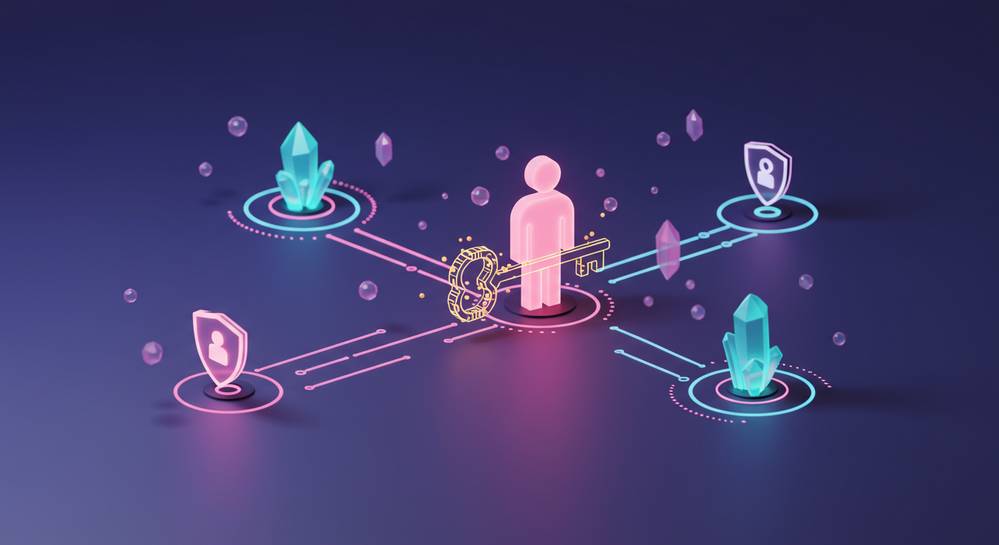Our digital identities are scattered across countless platforms, leaving us vulnerable to data breaches and misuse. What if you could own and control your personal information in a secure, unified way? This is the promise of decentralized identity on blockchain, a revolutionary approach that puts you back in charge. It is not just an idea; it is a practical solution to the flaws of our current digital identity infrastructure.
Understanding the flaws of centralized digital identity

The core risks of centralized data
The current digital identity model concentrates immense power and data into the hands of a few corporations. This architecture creates vulnerable silos, making centralized servers high-value targets for cyberattacks. The result is a constant threat of massive data breaches that compromise the sensitive information of millions. This system fundamentally limits user autonomy, leaving individuals with little to no say over how their personal data is managed, shared, or monetized by third parties.
This dependency on central authorities introduces several critical vulnerabilities that impact both security and personal freedom. Users are forced to trust that these companies will protect their data, a trust that is frequently broken. The core issues with this model include:
- Single Points of Failure: Centralized databases are attractive targets for hackers. A single successful breach can expose millions of records at once.
- Lack of User Control: Your digital identity is effectively rented, not owned. Corporations can revoke access or sell your data without direct consent.
- Censorship and Exclusion: Service providers hold the power to suspend accounts, erasing a person’s digital presence and access to essential services.
These inherent flaws reveal a critical need for a new paradigm. The existing model is unsustainable and fails to prioritize user interests, highlighting why the benefits of decentralized systems are becoming essential.
How decentralized identity provides a new solution
Decentralized identity on blockchain introduces a user-centric model known as Self-Sovereign Identity (SSI). This framework fundamentally shifts control away from corporations and back to the individual. It operates on a secure and immutable undefined, creating a trustworthy foundation for digital interactions. The system is built on two core components that empower users to manage their own data securely and privately.
Decentralized identifiers (DIDs)
A DID is a globally unique identifier that you create and own, independent of any organization. Think of it as a permanent digital address that only you control. It allows you to prove who you are without needing permission from a third party. This simple yet powerful tool is the first step toward reclaiming ownership of your digital self, ending reliance on corporate-issued usernames.
Verifiable credentials (VCs)
VCs are the digital equivalent of physical documents like a driver’s license or a university degree. An issuer, like a government or school, cryptographically signs and issues a credential directly to you. You can then store it in a personal digital wallet and present it to verifiers to prove specific claims without revealing excess personal information. This ensures both privacy and authenticity.
Core advantages of embracing self sovereign identity

Adopting a decentralized identity on blockchain offers transformative benefits for both users and organizations. It redesigns the flow of personal information to prioritize user autonomy and security, moving away from the vulnerabilities of centralized systems. This approach not only enhances privacy but also streamlines verification processes, making digital interactions more efficient and trustworthy across the board.
- User Control and Ownership: Individuals gain complete authority over their identity. They decide precisely what information to share, with whom, and for how long, managing credentials from a personal digital wallet.
- Enhanced Security: By eliminating central data silos, the risk of large-scale breaches is drastically reduced. Instead, information is protected through a distributed network, ensuring undefined security.
- Increased Privacy: Users can share specific proofs without exposing sensitive underlying data. For example, you can verify you are over 18 without revealing your exact birth date or address.
- Improved Interoperability: Standardized protocols allow credentials issued by one organization to be instantly recognized by another. This creates a truly portable digital identity that works across platforms.
Practical use cases for decentralized identity today

The concept of decentralized identity is not just theoretical; it is already being implemented to solve real world problems. These applications demonstrate its potential to revolutionize how we manage digital trust and verification. Practical solutions are emerging that enhance security and empower users across different industries, proving the value of a decentralized identity on blockchain.
Financial services
In banking, this technology streamlines Know Your Customer (KYC) and Anti Money Laundering (AML) processes. A customer can complete verification once to receive a credential. They can then use it to instantly open accounts at other institutions, significantly reducing friction and operational costs for everyone involved.
Healthcare and data privacy
Patients can truly own and control their medical records. They can grant temporary, specific access to doctors or hospitals without handing over their entire health history. This model greatly improves patient privacy, data portability, and security in a sector where sensitive information is paramount.
Secure digital voting
A blockchain based identity can enable secure and transparent digital voting systems. It ensures each eligible person can cast one vote that is both anonymous and verifiable. This approach has the potential to reduce fraud, increase accessibility, and build greater trust in electoral processes worldwide.
The shift towards decentralized identity on blockchain is more than a technological upgrade; it is a move towards a more equitable and secure digital future. By placing control back into the hands of individuals, we can build a foundation of trust that is not dependent on fallible central authorities. To stay informed on the latest developments in this space, follow the insights and analysis provided by Blockchain Bulletin Weekly, your guide to the evolving world of blockchain technology.